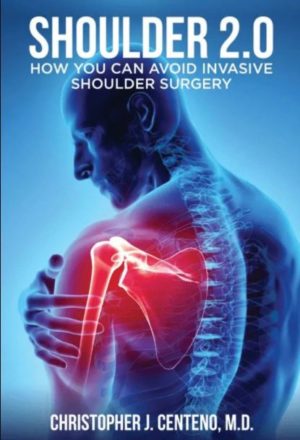If there’s one thing that we probably preach more so than any other at CSC, it’s that the body is actually one fully functioning machine. While at some point in medical history, it was stripped down and broken into individual body systems (e.g., nervous system, musculoskeletal system, gastrointestinal system, circulatory system, etc.) and from there even into individual parts and pieces, the fact is we shouldn’t be taking the body apart to examine it; we should be looking at the whole machine. Why? When one part of the machine malfunctions, this can affect, or be affected by, other parts of the machine, and, oftentimes, simply repairing the obvious malfunction doesn’t address the whole problem.
In regenerative medicine and interventional orthopedics, this is our focus: the whole body! One good example of this is a patient who was having trouble lifting his arms above his head. In the traditional just-examine-the-individual-part approach, a physician is only going to focus on the shoulders, but if the source of the problem isn’t actually in the shoulders, this isn’t going to do the patient much good. In this patient’s case, Dr. Centeno looked beyond the shoulder and into the interconnected regions to find the source and found it in his cervical spine region, or the neck (watch the brief video below to see Dr. Centeno perform this exam).
There are a couple of possibilities we are going to look at as to why a problem in the neck might cause issues with lifting the arms above the head. Let’s start with instability in the neck muscles and ligaments and then talk about the nerves.
Instability of the Neck Muscles and Ligaments
The muscles and ligaments in the neck are responsible for stability. The muscles take the active primary role here, providing the stability necessary to keep the neck aligned as you move. The ligaments provide a secondary line of defense and stabilize by preventing excessive motion and misalignment when the neck bones move.
The neck also houses stabilizing finger-like muscles (the multifidus, which we’ve discussed the importance of before) that are deeper down and running along the sides of the cervical spine and all the way down the full length of the spine. These muscles keep the vertebrae (the bones) stable.
When weakening occurs in any of these neck muscles, they can actually shrink (the medical term for this is atrophy). When a good plump muscle begins to shrink, you can understand that as it gets smaller, this can decrease proper support and result in instability in the neck. So what does this have to do with the shoulder?
Shoulder Muscles Work Overtime to Compensate for Neck Muscle and Ligament Instability
When the neck muscles fail, the next line of defense against neck instability, as mentioned earlier, is the supporting neck ligaments. The ligaments are like living duct tape with the job of holding bone to bone and preventing problems with alignment. So if a neck muscle fails, if the neck ligaments are strong, they can prevent the bones from damaging discs or nerves for example.
When the ligaments have also become lax or unstable, the next in line in the kinetic chain are the shoulder muscles. For example, the trapezius muscle in the shoulder will not only do its own job, but it will jump in to take on the extra work of the neck muscles or ligaments, something it isn’t designed to do. So the problem in the neck has overloaded the shoulder muscles, potentially causing pain, swelling, stiffness, or dysfunction, making it difficult for the shoulder muscles to do their own job, such as lifting the arms above the head.
Irritated Neck Nerves Can Weaken Shoulder Muscles
The nerve supply for our shoulder muscles branches off of our cervical spine in the neck and reaches into the shoulder muscles. If a neck nerve becomes irritated, blocking proper signaling to and from the shoulder, it can create weakness in the shoulder muscle and disrupt its ability to lift the arms above the head. For those physicians who only focus on the pain and/or dysfunction in the shoulder, unfortunately, an incidental MRI finding (e.g., an old rotator cuff tear) may be used to diagnose the shoulder issue. Imagine rotator cuff treatment or even surgery being performed when an examination beyond the shoulder may have revealed that the culprit was actually an irritated nerve in the neck.
If you watched the video above, it’s clear that the reason the patient couldn’t lift his arms above his head was because his upper neck was unstable. When Dr. Centeno stabilized the patient’s neck, the patient was then able to easily lift his arms overhead. While it might seem that the neck and shoulder are two entirely separate body parts, it’s clear that neck strength is absolutely critical for proper shoulder function. And if the neck muscles and ligaments fail, the shoulder muscles will suffer as well. If your doctor only wants to examine your shoulder in an attempt to diagnose your shoulder pain, he or she isn’t focused on the possibility that something else, such as the neck, might be at play. Find one that looks at the body as a whole and will examine beyond the body part.

